|
As 2017 comes to a close and we prepare for the 2018 Session, the work during the Interim has been intense. Here is a brief update on some of the highlights.
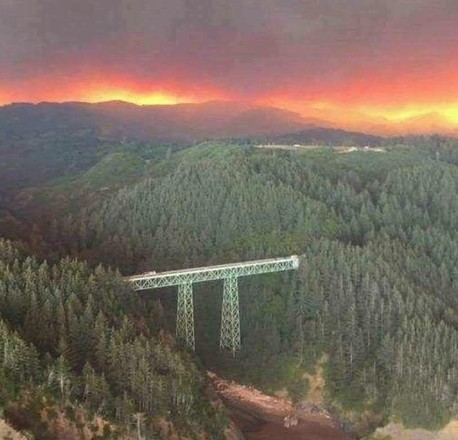 |
|
Thomas creek Bridge, the tallest bridge in Oregon, just north of Brookings.
This picture displays the incredible inferno that was the Chetco Bar Fire.
|
The Chetco Bar Fire burned over 191,000 acres within HD 1. Burning over 15 thousand acres of private land, homes, choking residents with hazardous smoke, devastating our rural economies and negatively impacting our watersheds. |
|
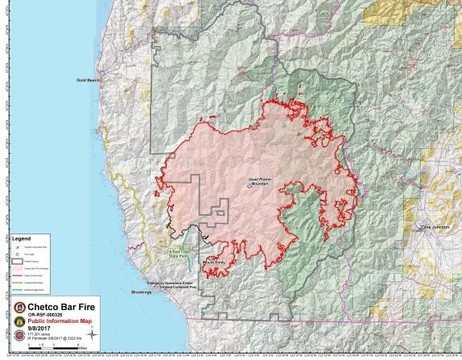 |
 The Chetco Bar Fire devastated over 191,000 acres of forestland and wildlife habitat. It burned homes, displaced residents and livestock, choked the residents of Southwest
Oregon with life threatening smoke, negatively impacting the environment and thousands of businesses
during their most critical season. For many, it was a vivid memory of the 500,000
acre Biscuit Fire just fifteen years earlier, and to others, the nearly 100,000
acre Silver Fire fifteen years prior to the Biscuit. For our kids, and the many
that were evacuated, it was traumatizing. I personally worked with mental health
professionals after hearing from evacuated parents that children would constantly
see an outside water spigot and ask why there was not a hose attached for them
to use in case the fire came to their place of shelter. The Chetco Bar Fire
almost did just that, and now the tinderbox with thousands of acres of fuel, is
only hundreds of yards away from existing homes and five miles away from the City of Brookings.
If you’re sensing a trend, you should. Fires are becoming more
of the norm, so much so that businesses are finding it increasing difficult to purchase insurance for loss of income due to forest fires. The marbled burn and intensely charred landscape
of the Chetco Bar Fire will continue to have negative impacts for years to
come. As the initial sediment is washed into the Chetco, negatively impacting
spawning habitat, the coming years will bring more sediment once the dead roots finally
give way. Logs and sediment will continue to impact the Chetco River and the
Port or Brookings-Harbor for many years. For the safety of the residents and communities, we are fully engaged with the USFS on salvage, hazard mitigation and restoration.

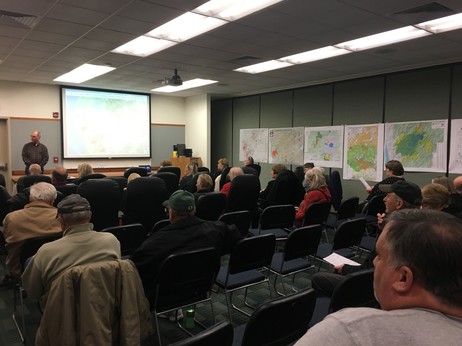 |
|
Rogue River-Siskiyou National Forest 2017 Fire Season Update 12-14-2017 Medford, Oregon
Click Here for a link to a news interview on these issues at this meeting.
|
Forest Management practices must change to adapt to changing
conditions on the landscape for the protection of citizens, their communities, their
businesses and the resources that built them and are meant to sustain them.
Period.
As Rogue Rogue River-Siskiyou National Forest Supervisor Rob
MacWhorter discussed at a recent fire season update, we need to change our
management of the forests, we cannot solely burn or suppress or cut our way to
a solution, and we have to work together using all three in a prescriptive
manner across the landscape. I and many others agree.
Rural Oregon and our region continues to struggle with 6% below mean zero pre-recession unemployment. Our residents, businesses and their communities, schools and public services continue with attempts towards recovery with less resources to do so. We have incredible students, yet there is little family wage work for them to raise their own family and they are forced to move elsewhere. We have been environmentally forced from a natural resource based economy towards a tourism driven economy, without the necessary infrastructure. Even with huge increases in economic development, it will come nowhere near generating the revenues needed to provide services and what few projects are presented, take years or die away after years of appeals from nonprofit environmental for profit groups. (I do appreciate working with the reputable groups as they are willing to negotiate rather than to litigate, many groups openly boast about refusing to negotiate and prefer to only litigate)
We have opportunities to actively manage our sequestered carbon timber resources to adapt to changing conditions on the landscape, further sequestering the carbon resource in buildings and manufacturing, while replanting a diverse forest landscape that will further sequester carbon as our forest grow and adapt to the changing conditions on the landscape. (Click Here for more information presented in a recent hearing) These adaptive changes in active management are necessary to assist rural Oregon in recovery, providing working family jobs, growing our economies and providing the needed resources to do so. We must shift from the poor management practices of the past to new active management that harvests the sequestered carbon land base and replants a diverse carbon sequestering forest system that will adapt to changing conditions on the landscape. We will never eliminate fire, but we know that prescribed burn emissions are far less toxic than that of wildfire. We know that roughly 25% of the sequestered carbon within the timber resource is released during wildfire, while the other 75% of the sequestered carbon is released over the following years as the resource decays. Over $400 million dollars was used in fighting Oregon fires in 2017 alone. These costs increase every year, taking away needed harvest project dollars and fueling environmental lawsuits that stop harvests from occurring. These dollars could be used in combination with shifts in management practices to more actively manage forest resources, generating more revenues to fund active management and the associated working family jobs for our youth and communities from the landscape. Utilizing prescribed burns to help produce more resilient forests would assist in mitigating the life threatening smoke while protecting resources, habitat, residents, property, environment, industry and our communities. These practices would also assist in growing our CLT/Mass Timber markets, creating more working family jobs while continuing to sequester carbon for centuries. As a State, we must work together to encourage our Federal Delegation to shift towards these efforts.
Many of you will remember the Joint Hearings I requested after the Chetco Bar Fire. I appreciate Chair Clem and Chair Dembrow for moving my request forward and having the needed hearing. (Click Here and Here for more information) We will continue the hearings and discussions into the 2018 Session and through the Interim. We have also formed and staffed a bipartisan and bicameral Fire Caucus in the Legislature and I appreciate the support and efforts of my colleagues as well as the expertise of Senators Baerschiger and Johnson on these critical issues.
There has been an active group of citizens, lead by Curry County Commissioner Boice, that have formed Curry Wildfire Prevention and Recovery. These hardworking and concerned residents are engaged on these critical issues and I appreciate their work.
The Curry Citizens for Public Land Access have been working with the Rogue River-Siskiyou National Forest Service for many years. Volunteering their time on road and trail maintenance and public access for citizens. They are engaged in the recovery efforts and I appreciate their work on these critical issues as well.
We continue to work with the USFS on mitigation, recovery, safety and salvage of sequestered carbon timber resource within the burned area. Thanks to CWPR and Curry County Sheriff Ward, many of the roads within the area have been reopened for public use. We continue to coordinate ODF and State resources to assist USFS where needed on recovery, salvage, management and mitigation efforts.
Governor Brown created two Recovery Council's in the aftermath of the devastating wildfires that ravaged across our State, one for the Gorge's Eagle Creek Fire near Portland and the other for the Chetco Bar Fire near Brookings. I was selected by the Governor as the Convener of the Chetco Bar Fire Recovery Council. I am grateful to the members that assisted in the thoughtful process and recommendations to the Governor and Regional Solutions on where resources are needed to assist with our recovery. We are also having discussions at the State on the need for disaster preparedness dollars to be set aside to assist in the future. Below is a summary of the recommendations for needed resources we passed onto the Governor for her assistance. I will continue to work with Governor Brown, Regional Solutions, Agencies and my Legislative colleagues to meet the requested resource needs. So many citizens were displaced during this event, businesses lost millions and some were forced to close. I have faith; as Governor Brown is currently calling for the Legislatures support of $5 million to help combat Portland's homeless issues, that she is steadfast in her continued support of our communities, her Chetco Bar Recovery Councils efforts and the needed funding for their recommendations.
The Council has also requested that the Charter forming the the Recovery Council be extended for two years so that we may continue to monitor the needed resource process as well as the subsequent projects for our residents.
Economic Impact
Data on the immediate economic impact of the fire is somewhat inconsistent. Employment Department analysis suggests as few as 10 jobs (looking at total aggregate employment, based on a sample) were lost due to the fire in Curry County. The impact was more pronounced, according to the data, in Josephine County—about 100 jobs lost. However, based on the anecdotal information collected to date, that estimate for Curry County appears to be far too low. Over twenty businesses have expressed interest in disaster recovery lending from SBA and report much more significant job losses (an average of 2-3 across those companies reporting impacts). Impacted businesses include leisure and hospitality, but also a variety of personal services providers and retail; impacts were primarily lost revenues due to lower visitation and lower economic activity. This very likely translates to hundreds of lost jobs in the relatively small local Brookings economy. The impact varied between several businesses that were essentially shut down for three to four weeks to those losing 40-60% of typical revenues for the peak impact month.
Working capital: The clear and short-term unmet need is for greater working capital for businesses to stabilize their operations headed into a slow season, especially for tourism and travel-related industries. Thanks to your request, the Small Business Administration has activated the Emergency Injury Disaster Loan (EIDL) program for Curry, Coos, and Josephine counties. However, the EIDL program is of limited usefulness to some businesses.
Recommendation:
1) Make economic development funds available as soon as possible to guarantee or buy down interest rates for businesses that need to borrow to survive. The council recommends seeking this funding in the most expedient possible fashion. Most of the businesses impacted were fairly small, but important to the economies of their communities. Several are significantly larger, however, and are key drivers of visitation—such as Jerry’s Jet Boats and Hellgate Jet Boat operators, and Oregon Shakespeare Festival. Request: $250,000. The Council is interested to provide input and assistance in the selection of recipients.
2) The Council supports Business Oregon’s consideration of a new state emergency disaster relief program that would include a low-interest loan product for businesses impacted by disasters. However, the greatest need for businesses impacted by the Chetco Bar Fire is immediate.
3) The Council supports the effort by Oregon Shakespeare Festival to develop a long-range strategy for addressing fire impacts.
Laying a foundation for long-term recovery:
In the long term, the fire has destroyed millions of dollars of both privately and publically owned merchantable timber. This is a significant lost asset. In combination with the challenges the local fishery has been facing, the economic base of south Curry County is threatened. City of Brookings has submitted a grant request for $60,000 to US Economic Development Administration for funding to complete a comprehensive assessment of economic impact and lay the groundwork for an updated regional economic development strategy. The City has requested funds, also, from the Department of Land Conservation and Development (DLCD) for this work. Staff support is needed to assist with stakeholder involvement and administration of the effort.
Recommendation:
1) The Council requests $65,000 to contribute to an economic impact analysis. (If the City’s Technical Assistance grant request to DLCD is successful, this amount could be reduced to $25,000. In that case, all funds would be devoted to helping fund a staff position, likely with South Coast Development Council, to support this effort.
Natural Resources & Infrastructure Impacts:
The Chetco Bar Fire has had major impacts across the landscape. According to the USFS Burned Area Emergency Response, there was a relatively smaller area with high soil burn severity:
• 10,700 acres of high soil burn severity of 170,000 total USFS acres burned
• 1,200 acres of high soil burn severity of 6,700 acres of BLM land burned
• 2,100 acres of 14,000 acres of private lands burned.
This will pose a significantly increased threat of soil erosion, debris flows, landslides and higher sedimentation for years to come. City of Brookings has received $30,000 grant from IFA to help evaluate what are the potential negative impacts on the City’s (and Harbor’s) drinking water.
USFS and BLM activities will focus primarily on culvert replacements, invasive treatment, and danger tree removal. Some direct seeding/soil erosion control efforts are only being pursued to protect sensitive cultural resources. USFS has indicated interest in issuing salvage sales in some portion of the burned area. BLM has contracted with South Coast Lumber to conduct road patrols to identify emerging hazards, blocked culverts, etc., in the BLM land area. BLM is planning 370 acres of tree planting in the Bravo Creek drainage. Seedling supply will be a major constraint on replanting efforts.
Recommendations:
1) Salvage sales, if well-designed, can have positive economic effects (through employment driven by both logging operations and increased timber supply) and contribute funds to resource recovery. The Council encourages USFS (and BLM) to structure such sales to fund restoration projects. The Council requests that the State of Oregon consider use of “Good Neighbor Authority” to provide the USFS staff resources to assist with salvage sale preparations. USFS is considering salvage within 13,000 acres of USFS matrix lands (i.e., outside Late Successional Reserve areas) that were severely burned in addition to danger tree removal along roads. These efforts can provide revenues for additional landscape restoration projects and potentially reduce future fire impacts within the urban/wildland interface so close to the Brookings community. The Council is also in favor of USFS considering expanding the “buffer zone” of road-side danger removal as an additional salvage effort.
2) Riparian restoration. Please encourage OWEB to prioritize applications for projects to do riparian plantings to reduce future down-cutting and stabilize banks. In addition, mitigation for fish habitat is needed. There are excellent opportunities for water-quality and fish passage improvements outside of burn area; several are already in design. Community organizations lack the needed capacity for project development & design. Funding request: please consider identifying funds that could add capacity for local organizations, such as the Curry Watersheds Partnership, to rapidly advance project design to meet 2018 OWEB applications deadlines. Request: $65,000.
3) The State should encourage local landowners to leave wood in place in streams.
4) Please encourage Oregon Department of Forestry to assign an additional ODF stewardship forester to assist with issue/opportunity identification and technical assistance for local landowners.
5) Studying and understanding the effects of the Chetco Bar Fire is a tremendous opportunity to engage students, community members, and visitors to the region in understanding the process of natural regeneration and recovery that takes place in the wake of fire. The Council believes scientific research and more advanced forestry practices represent a viable opportunity for future economic development, and to that end, engaging youth is a critical component of building that future workforce. The Council requests support of $75,000 to fund citizen-science study of impact of fire and sedimentation on salmonid populations. The Council recognizes that the Oregon Resources Research Education Center (ORREC) as an ideal partner. This effort would include development of “volun-tourism” opportunities.
6) Provide ODFW with funds to cooperate with this effort of Chetco Bar Fire impacts by completing juvenile steelhead surveys in the Chetco River watershed. Request $50,000 to fund a three person crew to conduct the survey (the last one was completed over 15 years ago) and develop a well-developed report.
7) Landslide, debris flow, flooding protection/mitigation. The Council requests funding to the Curry County Road Department in the amount of $60,000 to help pay for storm patrol (monitoring) and necessary cleaning, and minor repair of culverts, drainage swales, bridges and roadways on both public and private lands. It is estimated that the 3 year additional labor and materials for addressing flooding and erosion, resulting from the Chetco Bar Fire, to be more than 850 labor hours and $35,000 in materials. These figures assume that no major roadway or bridge failures occur as a result of additional erosion. Should Curry County experience any significant failures, substantially greater funding support would be required—see sub-point 8 below.
8) Please direct Office of Emergency Management to continue to track the impacts of landslides and debris flows on road, port and other infrastructure and continue to evaluate potential for federal disaster declaration. Port of Brookings is very likely to need the use of the state dredge in coming years to deal with expected higher sedimentation.
Tourism & Recreation
Tourism is a major driver of the local and regional economy—and a critical component of future economic development. The industry suffered from immediate impacts in terms of reduced visitation in 2017, but also faces significant uncertainty regarding the natural recreational assets that are a key driver for visitation.
The USFS has opened access to several river bars—key boat launches to allow recreational fisherman and guides access to the river. Members of the community remain very concerned that USFS could be overly cautious in restricting access for recreation.
Siskiyou Mountain Club has mapped the fire in comparison to priority trails. A very high level of effort is going to be required in the middle-term (i.e., years 3-8 after the fire) to maintain trails. The burned areas will have heavy brush growth impinging on trails and there will be significantly higher numbers of trees falling and blocking the trails. These needs will not peak for several years.
Recommendations:
1) The Council requests that the State of Oregon remain in close communication with the USFS regarding recreational access in the burned areas. Please thank USFS for restoring access to Nook Bar (and Redwood Bar and South Fork Boat Launch) quickly, and request that they continue to open access as soon as feasible. Request USFS provide public up-to-date mapping of what is closed vs. open. The interests of residents and potential visitors should be an important consideration in decisions that must, of course, balance safety concerns with other values.
2) The Council appreciates the efforts by Travel Oregon and Oregon Coast Visitors Association in their development of a cooperative marketing effort for a winter campaign to bring visitors to the coast.
3) The Council encourages all of the jurisdictions of South Curry County to re-convene and recommit to the common use of the Wild Rivers Coast brand. The Council requests $50,000 to provide micro-grants to local businesses to implement complementary marketing campaigns and to support greater cooperative marketing.
4) Siskiyou Mountain Club has been coordinating with the US Forest Service regarding recovery on trails impacted by the 2017 Chetco Bar Fire. BAER funds will pay for immediate safety issues, but will not address the efforts needed to re-open recreational trails to the public. USFS and Siskiyou Mountain Club are in strong agreement that the best remediation would be to hire a small crew of experienced trail professionals to work next year on projects that
• maintain public access to trails
• reduce erosion and sedimentation in salmon bearing streams
• fortify trails against future damage.
The Council requests $148,000 to fund a trail crew to work for the season. Funding can also support intern and volunteer work. Funding should be made available to both Siskiyou Mountain Club and Curry Citizens for Public Lands Access for on-the-ground activities.
Ocean Salmon Closures
The Chetco Bar Fire came on the heels of the announcement of the closure of the fall ocean chinook season—and additional bottom fish closures. The fire and any associated degradation of fresh-water salmon habitat, while concerning, is unlikely to have any impact on future ocean closures. (Chinook from the Klamath and Sacramento River systems dominate the overall population.)
Recommendation:
1) Oregon Employment Department, Business Oregon, and other social service agencies should form a rapid response team capable of mobilizing additional resources in the case of future closures.
Future Fire Preparedness
The Council, of course, encourages efforts by the State of Oregon (and federal and local partners) to take all appropriate steps to reduce and mitigate future fire danger. Business owners and other community members most commonly responded to questions about mitigation of the impacts of this past fire season by expressing great concern about next fire season, and the next, and into the future. While mitigation and prevention of future fires was not the Council’s focus, two items did rise up for consideration.
Recommendation:
1) The Council recommends a task force be established—perhaps with Oregon Health Authority and Oregon Emergency Management—to develop recommendations for establishment of air quality shelters and/or methods to assist health care facilities with mitigating indoor air pollution from very severe fire impacts.
2) The Council recognizes the value of biomass utilization as an element of forest management and fire prevention going forward. Elements of this concept include reduction of vegetative fuels on both public and private lands, harvesting and conversion of those fuels for utilization in energy production, and working with power and local lumber production to develop electric generation facilities that would utilize these fuels.
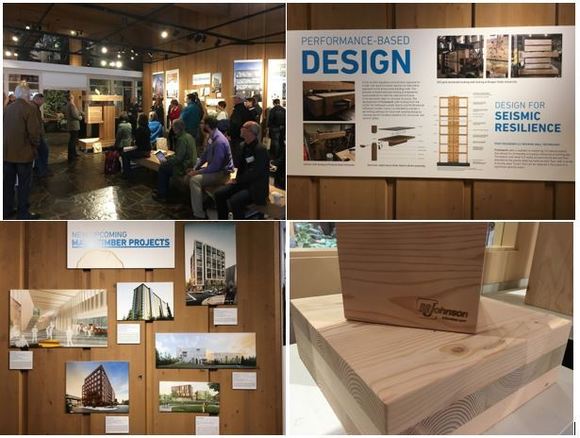 In the beginning of my term as a County Commissioner, I began to pursue CLT/Mass Timber construction when former Governor John Kitzhaber had discussions in the legislature. I had the opportunity to work on legislation during the '17 Session and take a tour a few months ago during the Interim. Our State Agencies and OSU have partnered with industry and have been performing the necessary testing that will allow larger and taller building construction utilizing our carbon sequestering renewable timber resources. (Click Here for more information)
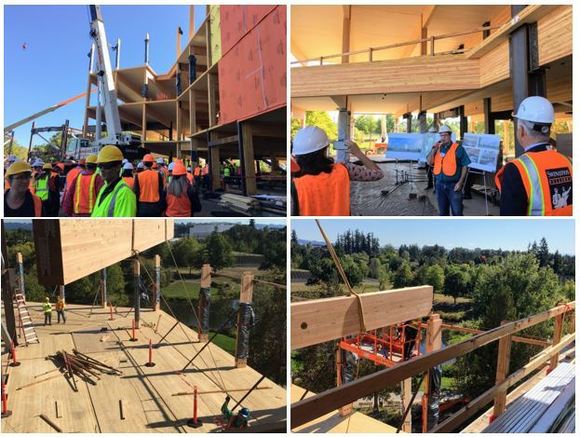 Above is the First Tech Credit Union building being constructed in Hillsboro Oregon. (Click Here for a link to a story) As the Nation's Largest Mass Timber building (Click Here for the link to another article) under construction, it will be five stories high and contain 156,000 square feet of office space. The combination of Steel, Concrete and Wood produces a lighter, more seismically resilient, fire resistant building constructed in less time. The unfortunate irony of this massive building constructed of sequestered carbon? The beams and materials have to be transported from Vancouver, BC, while we have the raw resources only miles away. Think about that for a moment...
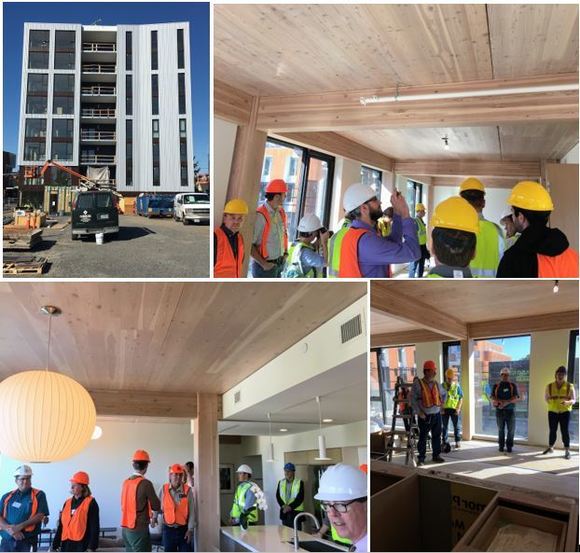 We have great opportunities for our rural and urban residents, their industries, their communities and the environment. As the carbon sequestration debate continues across our State and within the legislature, we have industries working together that can and will bridge the gap, that finds the "sweet spot" between the hard left and right and can truly make a positive economical and environmental impact across our State. What is needed? Supply!
We must change our forest management practices to adapt to changing conditions on the landscape and to provide the raw materials for the CLT/Mass Timber Industries to tool and expand. In collaboration with our Steel and Concrete Industries, we can grow our rural Oregon economies with working family jobs utilizing our renewable carbon sequestering timber resources, replanting even more carbon sequestering trees while mitigating wildfire and its release of the sequestered carbon resource. (Click Here for another article on the benefits of CLT/Mass Timber)
 The State, as well as the country, has an Opioid Crisis. The Governor created an Opioid Task force and I was honored to be one of four legislators appointed by the Governor to the task force. We were meeting regularly and needed to have initial concepts for the short 2018 Session months ago. some of the concepts include:
- Mandatory
PDMP registration for all licensed prescribers,
- Insurance
commissioner report on barriers to accessing medication assisted
treatment,
- Peer
recovery mentors for county pilots (South Coast, Southern Oregon, Salem, PDX)
modeled on Rhode Island “Anchor ED” program, now recommended as a best
practice by the National Governor’s Association. (Click Here for a link to an article on the program)
We also proposed that the Task Force continue its work through 2018 so that we may have more comprehensive concepts for the Legislature's consideration in 2019.
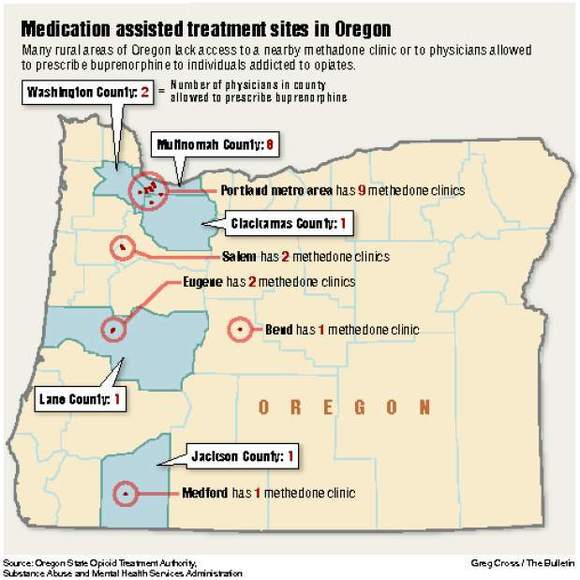 Part of my focus on the Opioid Task Force has been to add more recovery tools for rural Oregon residents. As the map above displays, rural Oregonians do not have access to methadone for example, a commonly prescribed support drug. Additionally, many addicts become addicted to the very methadone that is prescribed daily to help them. Further, methadone mimics opiate use and makes it difficult for the user in recovery to be employed, as they must receive their methadone prescription daily and subsequently be under the influence. I feel we have opportunities to actually impact the opioid crisis with shifts in treatments as discussed above, additional drug therapies that block the effects of use (rather than mimic them) partnering with judiciary, corrections, counties and law enforcement for better treatment closer to home with more tools for rural Oregon and the rest of the State.
 Many of you know that I have a passion for our youth to receive the best education possible. This is one of the reasons why I have been a long time school board member for the Port Orford-Langlois School District 2CJ. ORREC is an exceptional extension of this passion and a vision long sought by many of my colleagues. ORREC's Mission is to provide an educational facility for outreach and work in partnership with the K-12 school systems and educators on the southern Oregon coast providing students with free, world-class vocational science learning opportunities. The science based STEM learning utilizes the southern Oregon and northern California coastal environments and their relevant life cycles which are unlike anywhere else in the world. ORREC'S programs capitalize on that uniqueness by giving students and citizens, young and old, life-long learning opportunities never before available in our specific region. Finally, ORREC's vision is to engage students with the region’s rich natural resources and the scientific community to create authentic, personally-relevant, and transformative learning experiences. Long before Oregon Measures 98 & 99, ORREC was building partnerships for success and I am grateful for their work on behalf of our residents. I look forward to growing these great learning opportunities and economic development projects for our residents throughout the District. (Click Here for more information)
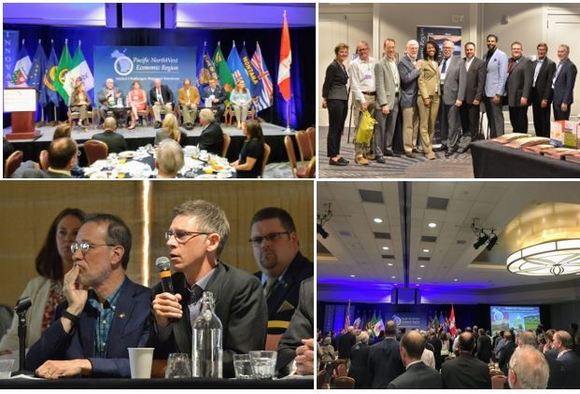 I was honored to be appointed as the Oregon House Republican Delegate to PNWER. As the Vice Chair of the Economic Development and Trade Committee, I look forward to continuing to work with my colleagues from across the northwest United States and Canada on economic development for our region. During my first conference above, it was a privilege to sit on a number of panels including an envasive species panel for Sudden Oak Death as well as another discussing innovation and the urban/rural divide. (Click Here for more information)
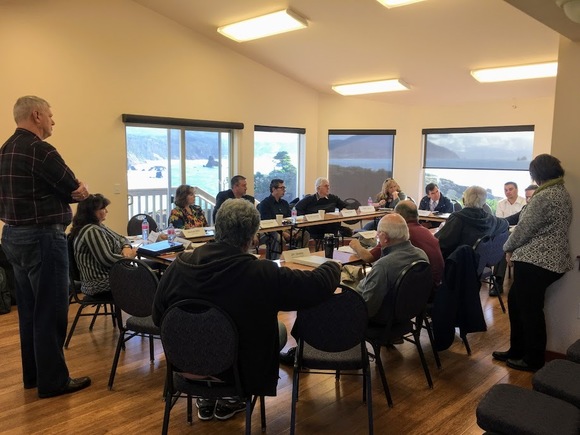 The Port of Port Orford Seafood Innovation Center is a critical economic development project for the Port and City of Port Orford. It is a project I've been involved with since I was the City Council and Chamber Presidents, and continued through my work as a County Commissioner. The Port of Port Orford supports over 35% of the economic dollars within the community of Port Orford. The Port is also unique in a number of ways, one of which is its live fishery industries and direct access to fresh ocean sea water. There have been great efforts over the last few years by some amazing residents, and the Port is well managed by its Port Commissioners. Adaptive innovation is a focal point with the Port, and science has blended with fisheries very well. Port Orford has Oregon's first Marine Reserve; Redfish Rocks, and is well known for its grassroots collaborative efforts that have been used as a model coast wide. I have been involved with the socio-economic efforts of the Redfish Rocks Community Team since its conception, and appreciate all of the efforts of my colleagues. We have also attracted; due to the great work of Mr. Calvenese and others, an OSU Field Station and a Dive Air Tank Refill Station in Port Orford near the Port. I convened a meeting of stakeholders, from Oregon Solutions, Regional Solutions, Port Commission, South Coast Development Council, Curry County, EDA, AOC, ODF&W and others, to assist in moving this critical project forward. The Port of Port Orford Seafood Innovation Center will bring an enormous economic benefit and continue the momentous efforts of adaptive innovation for our community. (Click Here for more information)
 Curry County Commissioner Boice and I participating in a Sudden Oak Death (SOD) Tour in Brookings. As you know, our Sudden Oak Death Task Force is continuing to work and we continue to look for resources to fund treatment. I appreciated Agriculture and Natural Resource Committee Chair Clem for scheduling my requested hearing on SOD. The presentations enlightened many in the Legislature on the severity of the disease, the serious EU1 strain, its spread and the economic impact to the State. The House Agriculture and Natural Resources Committee unanimously supported a recent letter requesting immediate and full funding of the Task Forces recommendations outlined in our Strategic Plan. (Click Here for more information)
|
I was honored to speak at the Annual Blessing of the Fleet in my hometown of Port Orford, Oregon. We have lost many fishermen through the years that has had enormous impacts on our communities. |
|
 |
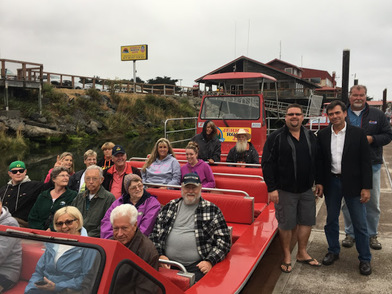 |
|
During the Chetco Bar Fire, Jerry's Jetboats was one of the many businesses negatively impacted by the fire and smoke. This was during the time of my annual family reunion. We decided to head up the Rogue River. My dear friend Court Boice, a former pilot and current County Commissioner, came down to see us off. |
It was an honor to join Senators Hansell and Roblan, and Representative Gomberg at the Association of Oregon Counties summer conference to give an update and our perspectives on the '17 Legislative Session. |
|
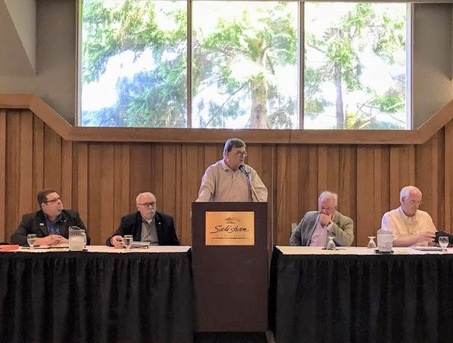 |
 The Port of Coos Bay is a vital economic hub for southwest Oregon's economy. The economic development potential with expansion of these services will bring needed working family jobs and have positive impacts for the industries and communities in our region. I continue to work with colleagues to support these efforts and ways on how we may expand and fortify our Port and Rail infrastructure.
|
It was a privilege to be selected as one of two House members to attend the Wireless University Communications Policy Seminar. The advancements in technology and communication continues to accelerate at light speed. To put it in some perspective, the iphone was released ten years ago and "apps" didn't exist until then. These advancements will bring more opportunities for our residents. |
|
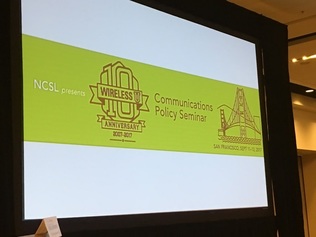 |
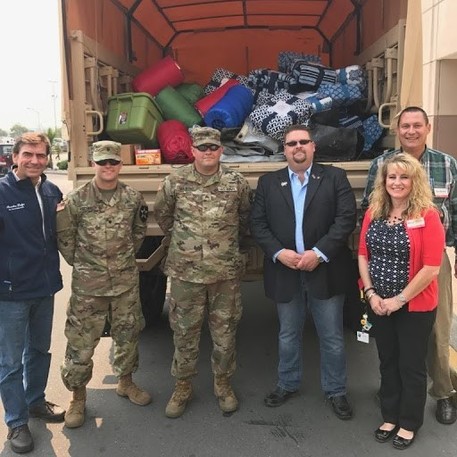 |
|
Working with Commissioner Boice, Oregon National Guard and managers of Fred Meyer in Brookings. Fred Meyer graciously donated sleeping bags, blankets, socks, gloves and hand warmers during the Chetco Bar Fire. Thankful for the community for the efforts during a most difficult time. |
Brookings-Harbor Food Bank played a huge role supporting residents through the Chetco Bar Fire. Governor Brown visited the food bank during her visit forming the Chetco Bar Fire Recovery Council. Josephine County Commissioner Morgan and Curry County Commissioner Boice were also very supportive. The Food Bank continues to offer critical support through our recovery. |
|
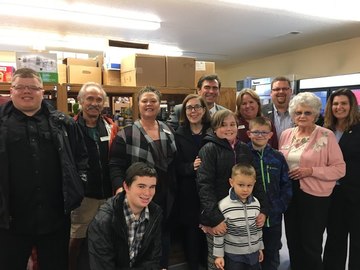 |
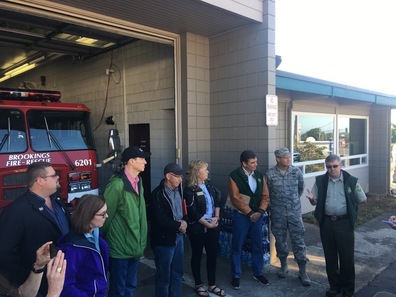 |
|
USFS Forest Service Chief Tooke visited the Brookings and the Chetco Bar Fire, with Senator Wyden, Congressman DeFazio, Governor Brown, myself and Commissioner Boice. We continued the conversation with USFS Chief Tooke on the need for changes in management practices to mitigate megafires. |
A tour of the Chetco Bar Fire's burned area was facilitated by Commissioner Boice. The 191,000 acres is a reminder of the environmental impact and the irony of how little spotted owl habitat is left on this landscape. Salvage is critical for economic and environmental benefits for our communities. |
|
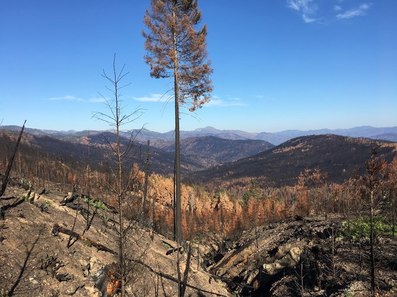 |
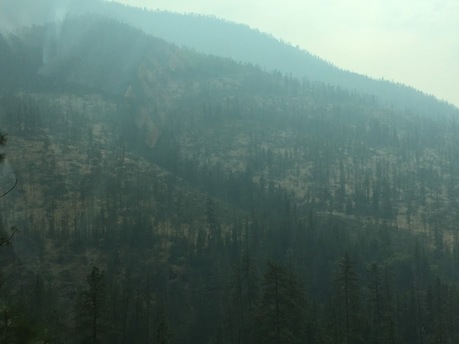 |
|
US Senator Merkley, USFS, ODF, mydelf and other agency personnel toured the East Side of the Chetco Bar Fire, and the old Biscuit Fire scar. (The Chetco Bar Fire started in the Biscuit Fire scar within the Kalmiopsis Wilderness) |
Privileged to help these great south Curry County residents (Michael Freels, Scott Darger and Daryn Farmer) with their Chetco Bar Firefighter Fundraiser to raise money for the Brookings-Harbor High School Students. Their smoked tri tip and fresh crab dinners were amazing and they offered free meals to our firefighters. |
|
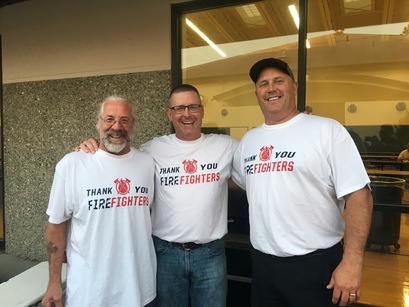 |
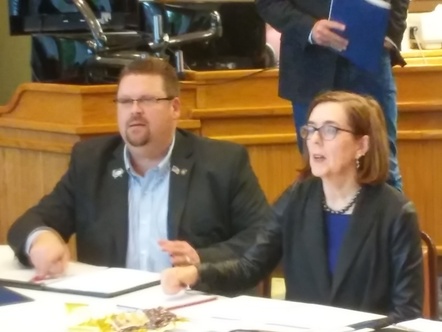 |
|
Working with Governor Brown and Community Leaders on the Chetco Bar Recovery Council in Brookings. I appreciate the great work of the Recovery Council Members and the commitment of Governor Brown in assisting with our needed recovery. |
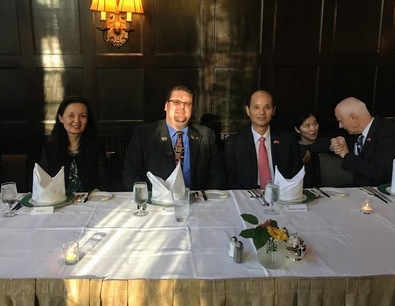 As a member of the Oregon-China Sister State Relations Council and the Chair of the Southern Oregon China Connection, I continue to work on expanding our trade partnerships with China to benefit our rural Oregon agriculture, business and industries throughout our region. OCSSRC (Click Here for link) is working on exporting more Oregon products to Chinese markets and one of the tools is the new E-Commerce platform. I encourage you to follow the OCSSRC link above to learn more about our E-Commerce platform for your products. (Click Here for Legislation I drafted and passed during the '17 Session supporting Oregon's trade with China)
|
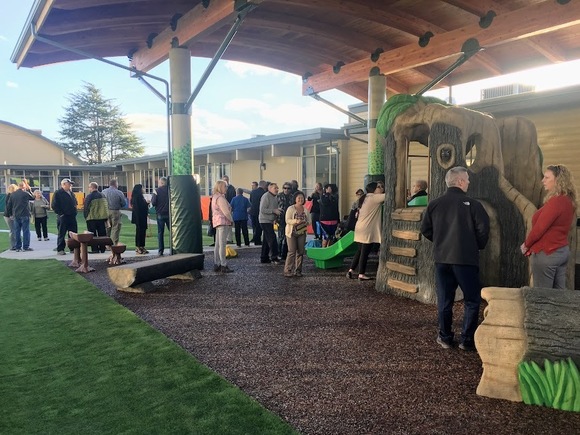 Coquille School Superintendent Sweeney and his School Board are innovators and their new Child Development Center is a testament to their innovation. As a long time School Board Member myself, I know first hand how our schools play a critical role as the hubs of our communities. This new Child Development Center will lay a foundation for working family support throughout the community and I applaud their efforts. I have also invited Superintendent Sweeney to join my Early Childhood & Family Support Committee to give the State a presentation on this and other innovative work they are engaged in for their students and parents. (Click Here for more information)
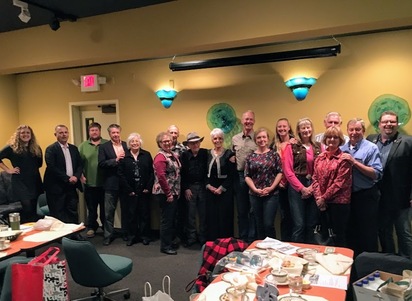 Our farmers, ranchers and agriculture industries are critical to our economies and provide for our communities and their residents. I'm honored to have been a guest speaker at the Coos-Curry Farm Bureau Annual Meeting and appreciate all of their great work for our residents.
A big thank you and congratulations to Sharon & Charlie Waterman for their recent induction into the Oregon Farm Bureau Hall of Fame.
|
I appreciated joining Douglas County Commissioner Leif for a tour of the new Bottle Drop facility in Roseburg. (Yes my District extends to Roseburg) We continue to work on locations and partnerships throughout our District to expand this great new program for our residents and businesses in our region. |
|
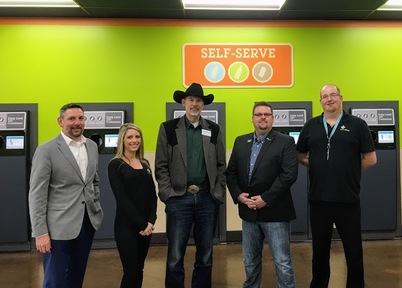 |
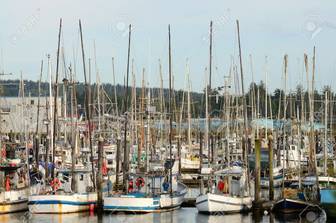 Due to an increase in the number of sport fishers this year, Federal quotas were exceeded and ODF&W closed the sport groundfish abruptly causing a huge economic impact to our coastal communities, residents and businesses. The Coastal Caucus was as surprised as many of you and found this lack of communication a serious problem. We have taken steps to improve communication and offered suggestions moving forward. We have also worked with ODF&W on getting the proposed
long-leader rule out in the federal register for comment. Federal
approval will provide a key management tool to diversify our recreational
groundfish fishery Apr-Sep and help take pressure off black rockfish and other
nearshore rockfish without adding pressure on Yelloweye rockfish. This is
particularly important because the Oregon Fish and Wildlife Commission recently
adopted general marine bag limits (5 fish, 12 months) that will be hard to
maintain through the whole year if participation is anything like this past
year, particularly if we do not have this long-leader fishery available during
the Apr-Sep period. The NMFS Rule is as follows:
Proposed rule; request for comments. RIN 0648-BG40 will file
at 8:45 a.m. on 12/18/2017, and publish on 12/19/2017. The comments due date is
1/18/2018.
Fisheries off West Coast States; Pacific Coast Groundfish Fishery Management
Plan; Authorization of an Oregon Recreational Fishery for Midwater Groundfish
Species
SUMMARY: This proposed rule would authorize the use of midwater long-leader
gear for recreational fishing in waters seaward of a boundary line
approximating the 40 fathoms depth contour off the coast of Oregon. Midwater
long-leader gear would be allowed for both charter and private vessels seaward
of the 40 fathom seasonal depth closure and monitored with the existing Oregon
Ocean Recreational Boat Sampling (ORBS) program. The use of this long-leader
gear is intended to aid in limiting bycatch of overfished and rebuilding
rockfish species, such as bottom-dwelling yelloweye rockfish, while still
allowing for the catch of abundant midwater species such as yellowtail and
widow rockfish. The season would be limited and occur between the months of
April and September, months currently subject to depth restrictions.
I also want to sincerely thank the members of the Sportfishing Advisory Committee for all of the great work and effort for our coastal sport fishery.
|
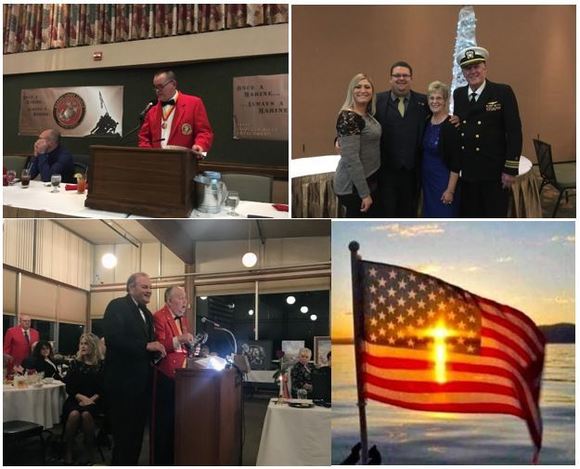 Our Veterans are our history, and we owe them our freedom and way of life. It was a privilege and honor to be the guest speaker at the Annual Coquille River Detachment Marine Corps Ball. I also attended the Calvin E. Murphy Detachment Annual Marine Corps Ball in Brookings. Thank you to both Commandants Dave Romanowski & Bob Gilmore for all of your great work organizing these celebrations of remembrance over the years. With the Governors early proposed budget gutting Veterans resources, we worked across the aisle to fulfill the will of Oregonians and fund our Veterans Services.
 It was a privilege to join Coos County Commissioners Cribbins, Sweet and Main, as well as many of our residents for the grand opening of this new ten mile section of mountain bike trail. Great work by Commissioner Cribbins, her colleagues and many others. Commissioner Cribbins comments from a press release, "This project just proves how much we can do when
we work together," stated Board of Commissioners Chair Melissa Cribbins.
"This partnership combined the efforts of Coos County, Wild Rivers Coast
Alliance, Jon-Paul Bowles, Chris Barnhart of Sentieros Consulting, Eddie
Kessler of Ptarmigan Trails, Travel Oregon and its regional steering
committees, and the efforts of the Wild River Coast Mountain Biking Club." Just north of Bandon, this new trail expansion will bring more recreation visitors to our region and is a great addition to our recreational trail systems for residents.
|
The Annual Oregon Leadership Summit brings over 1000 industry and legislative leaders together to discuss Oregon's future. This year's focus was "Oregon’s Fiscal Challenge Today; Where Technology Is Taking Us Tomorrow". I was honored to speak on a panel involving wildfire, forest management and CLT/Mass Timber innovation. (Click Here for more Information) |
|
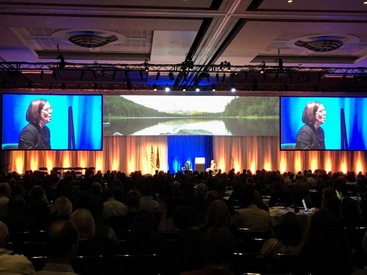 |
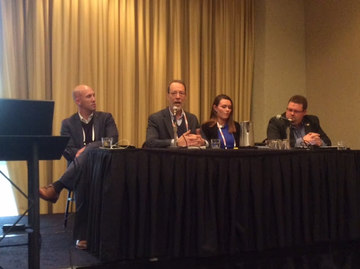 |
|
I joined Senator Dembrow at the Northwest Environmental Conference on a panel to discuss Legislative Perspectives related to our environment. Senator Dembrow (whom I respect and appreciate) and I have differing perspectives on his Cap & Invest Legislation he plans to move in the '18 Short Session and we continue to work on these issues. |
Joined the Port Orford Parks Commission for a fundraiser to help build their local Dog Park. Great event put on by some great volunteers. |
|
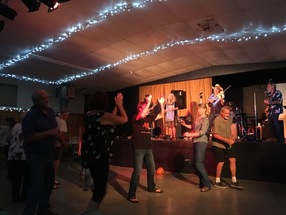 |
 |
|
Traveled to Madras to meet family and colleagues for the Eclipse. |
There were some amazing weddings that took place. |
|
 |
 |
|
My Brother is a Ducks fan, so... |
 I am amazed every year with the incredible work by the Friends of Shore Acres, Volunteers, community members and State Park Staff producing the majestic annual Holiday Lights at Shore Acres State Park.
It is an honor and privilege to represent you and have Shore Acres State Park as part of the northwest corner of HD 1. Our State Parks do a great job and I appreciate the opportunity to work closely with them as my House Committees (Agriculture & Natural Resources, Energy & Environment and Vice Chair of Economic Development & Trade) work directly with them. Thank you to all who makes this annual event so amazing, and thank you to all that come and enjoy these great festivities.
|
 |
|
At the southern end of HD 1 is the Nature's Coastal Holiday in Brookings, Oregon. This great organization puts on an amazing light display in Brookings Azalea Park. Thank you to all of the wonderful volunteers that make this spectacular event happen. |
Yes, this happened... in amazing 3D! |
|
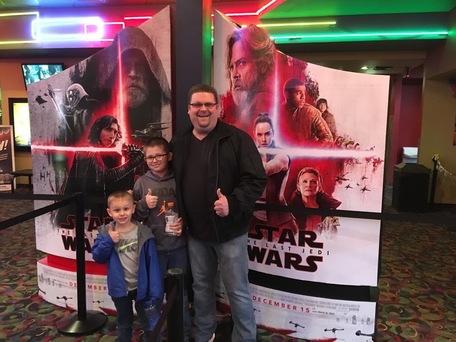 |

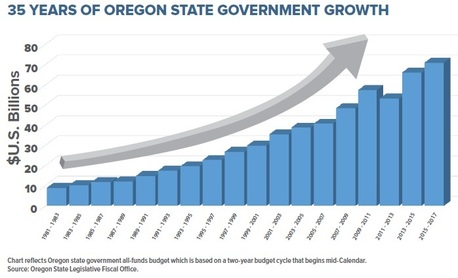 That was in the Oregonian Headline in January of '17. (Click Here for the article) The graph to the left shows the ever increasing revenues from our taxpaying citizens and an ever increasing appetite to spend more than their means. This also does not cover the PERS liability looms over our State and must be addressed. (Click Here for more information)
|
That was in the opening sentence of the Oregonian article in June of '17. (Click Here for the article) regarding the passage of increased taxes on health services and insurance premiums for the residents of Oregon. I opposed the Health Care Tax bill. (Click Here for the bill) (Click Here for a link to more information on the Health Care Tax - HB 2391) |
|
 |
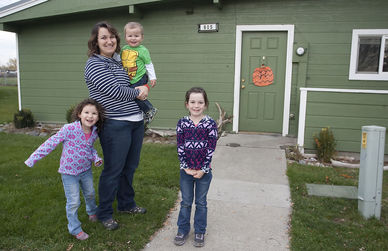 Oregon has a housing crisis, across the entire State. From the coast to the high desert, the issue of supply exists everywhere, for different reasons. The Legislature took steps, some good and some bad, to help address the these issues during the '17 Session. The majority agree that one of the main problems compounding our housing crisis is supply. The construction industry has not fully recovered from the recession, although adding incentives will help increase supply and grow employment in the construction trades.
Many of you know that I have been working to help address these issues, with a focus on Affordable Workforce Housing. In drafting and passing HB 2377 (Click Here for the Bill) we added incentives to Affordable Multifamily Workforce Housing for multifamily rental housing, geared towards our middle income working families while giving a lot of opportunities to the local jurisdiction to design their own methods of implementation.
There was a Affordable Residential Workforce Housing component to HB 2377 that was amended out of the Bill during the '17 Session. I will be introducing this Affordable Residential Workforce Housing Program legislative concept in the '18 Session. This concept will be a great tool to assist in solving our housing crisis across the State by providing incentives to build the needed supply of residential housing for sale to our middle income working families. In doing so, it will open up supply of current housing for our lower income families. It will create working family jobs across the State in the construction trade industries. I look forward to continuing to work with you and my legislative colleagues on moving this impactful legislation forward.
|
 At the end of the '17 Session, SB 1070 was presented, a Cap & Invest program modeled after California and British Columbia's Carbon Tax, that is initially estimated to cost Oregonians almost $1.4 billion dollars per biennium. (Click Here for the bill) I have spent considerable time during the Interim engaged on this issue. Portland Legislators are planning on moving a version of this bill during the '18 Session. I am opposed to this for a number of reason, as there is just not the time to properly work on the bill during the short session and allow the public time to engage the legislation. We also have serious concerns of "leakage", where companies can shut down and leave the State, causing job losses and economic hardships for our communities and their residents. Modeling this program after California that has almost ten times the population and the ability to buffer "leakage" is also not the best model for Oregon. It is also known that Cap & Invest will hit rural Oregon particularly hard. We will not have a copy of the redraft of the bill until January 8th.
Rural Oregon industries, businesses, agriculture and residents will be negatively impacted by this legislation, more so than urban Oregon. Yet rural Oregon sequesters urban Oregon's greenhouse emissions, especially within our District. We do so in our vast carbon storage, our forests. The majority of emissions that do come from rural Oregon, come from wildfires that emit the very sequestered carbon the proponents want.
We know climate conditions are changing, although they have been changing for millennia. 20,000 years ago there was a mile thick ice sheet covering much of the northeast, from New York through the midwest to the Dakotas. (Click Here for more information) I have discussed in committee and during workgroups that the Oregon Global Warming Commission (of which I am a member) reports that Oregon produces 0.14% of greenhouse emissions on the global scale. Less than one twentieth of one percent. Even the Director of the Oregon Department of Environmental Quality; during my questioning in committee, agreed saying,"Representative Brock Smith you are correct. That Oregon's portion of global carbon emissions is, I'll use the word minuscule." (Click Here for video of the committee hearing) The continued narrative is that Oregon must do "its part" and "lead by example", but at what costs to our residents, especially those in rural Oregon that continue to struggle. I believe rural Oregon and our carbon sequestering forests can grow (pun intended) our lead role in sequestering carbon, with shifts to more active management. This shift would reduce sequestered carbon released in wildfire, offer the supply needed for our CLT/Mass Timber industries to grow, sequestering even more carbon, creating needed working family jobs while growing our rural Oregon economies and replanting new carbon sequestering forests. (Click Here for more information)
Because of this, I am working with colleagues and industry on an alternative bill that could help rural Oregon residents and streamline access to resources. The market is causing industry to reduce emissions on their own, without punitive legislation. We should be looking at incentives and not taxes, with a common sense approach to ways we can reduce emissions while investing in our carbon sequestering timber resources. This bill will hopefully also allow a broader conversation on carbon sequestration so that we do not force a Cap & Invest bill that isn't ready will hurt Oregon residents and their businesses. (Click Here to read an article on this) I will keep you posted in future newsletters on these critical issues.
|
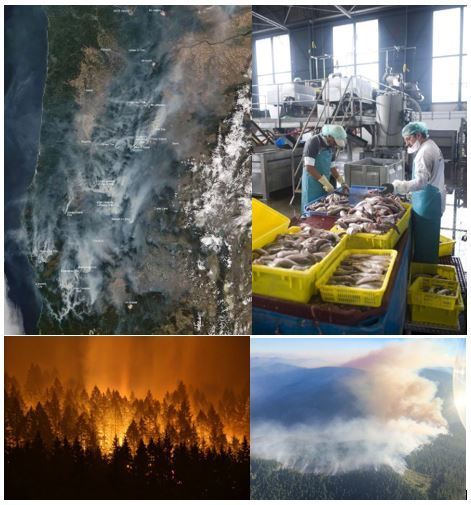 I have serious concerns over DEQ moving forward on Cleaner Air Oregon that could have negative impacts on our industries in rural Oregon that employ a number of our residents. Cleaner Air Oregon is; in my opinion, a political response to a lack of enforcement issue rather than taking responsibility. It began with emissions that were found from a glass factory in Portland. The former DEQ Director resigned (to whom I worked with as a County Commissioner and had great respect for) after the emission findings. (Click Here for a new article) It is seriously unfortunate that anyone was subjected to toxic emissions that exceeded State regulations. The State DEQ and Federal EPA have strict regulations to control toxic emissions from industry. Rather than taking responsibility and enforcing current law, the political response moved forward to create new laws. I argued that we should be enforcing current laws that protect Oregonians before we create new laws on regulation. The Legislature chose not to fund the DEQ request for Cleaner Air Oregon funding resources in the '17 Session and this was a clear message to many that the Legislature does not support moving Cleaner Air Oregon forward. However, DEQ is moving forward with the rule making and will be requesting the funding again in '18. (Click Here for the committee hearing questions I posed to the DEQ Director on the issue.)
The DEQ is also moving forward with new regulations on our Seafood Processors. The EPA has passed new regulations for water quality and other guidelines on seafood processing. DEQ's new regulations go far above what is outlined in the EPA regulations in a number of areas. The processors attempted to engaged throughout the DEQ rule making process, but there efforts and input was not excepted by the agency. These new regulations, that well exceed that of the EPA, will have serious financial impacts on our coastal seafood processor industries and negatively affect our communities and their residents.
We need to work with DEQ so that they can become a business and industry partner and help our communities and their residents stabilize and grow their economies. I see DEQ and other State agencies as partners with our citizens and their businesses that drive our States economy. We need to work with DEQ to increase the days to allow controlled burns throughout forests to mitigate catastrophic wildfire. The smoke from wildfire is extremely unhealthy for our residents, especially our children and elderly. Whereas the smoke from prescribed burns is much less toxic and can be implemented during optimal conditions. Wildfire and its smoke had great impacts on our residents, communities and their economies. Cycle Oregon was canceled, Oregon Shakespeare Plays were canceled to name a few.
To that end, we have the International Association of Athletics Federations World Championships scheduled; for the first time in the United States, in Eugene Oregon in 2021. This will be a huge economic boost to the entire State, as athletes and their families from around the world spend many weeks throughout all corners of Oregon. There is great concern that if we have wildfires and the related smoke like this year, that again canceled outdoor sports events like Cycle Oregon, there could be impacts on the IAAF World Championships. The event is scheduled during summer wildfire season in '21, and steps for resource management and wildfire mitigation need to be taken now.
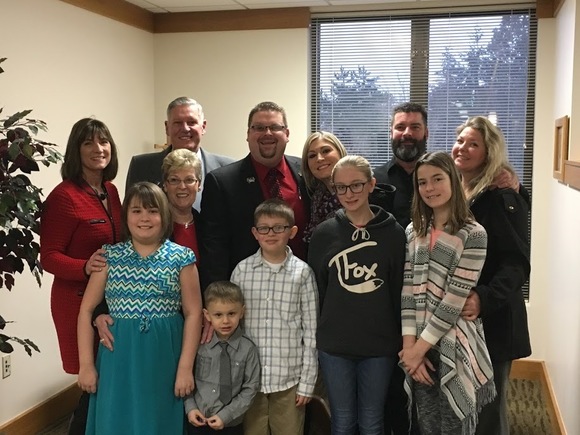 From my family to yours, I hope you had a very Merry Christmas and that you have a Blessed and Happy New Year!
It has been a very busy year and I am honored by the privilege to work for you as your State Representative. Thank you for the opportunity and I appreciate all that you do for our communities and their residents. Be safe and God Bless you and yours.
Yours truly,
Representative David Brock Smith
Together, we will build a better Oregon!
 House District 1
Curry, Coos, Douglas & Josephine Counties
Capitol Phone: 503-986-1401
Capitol Address: 900 Court St. NE, H-379, Salem, Oregon 97301
Email: Rep.DavidBrockSmith@oregonlegislature.gov
Website: http://www.oregonlegislature.gov/smithd
|